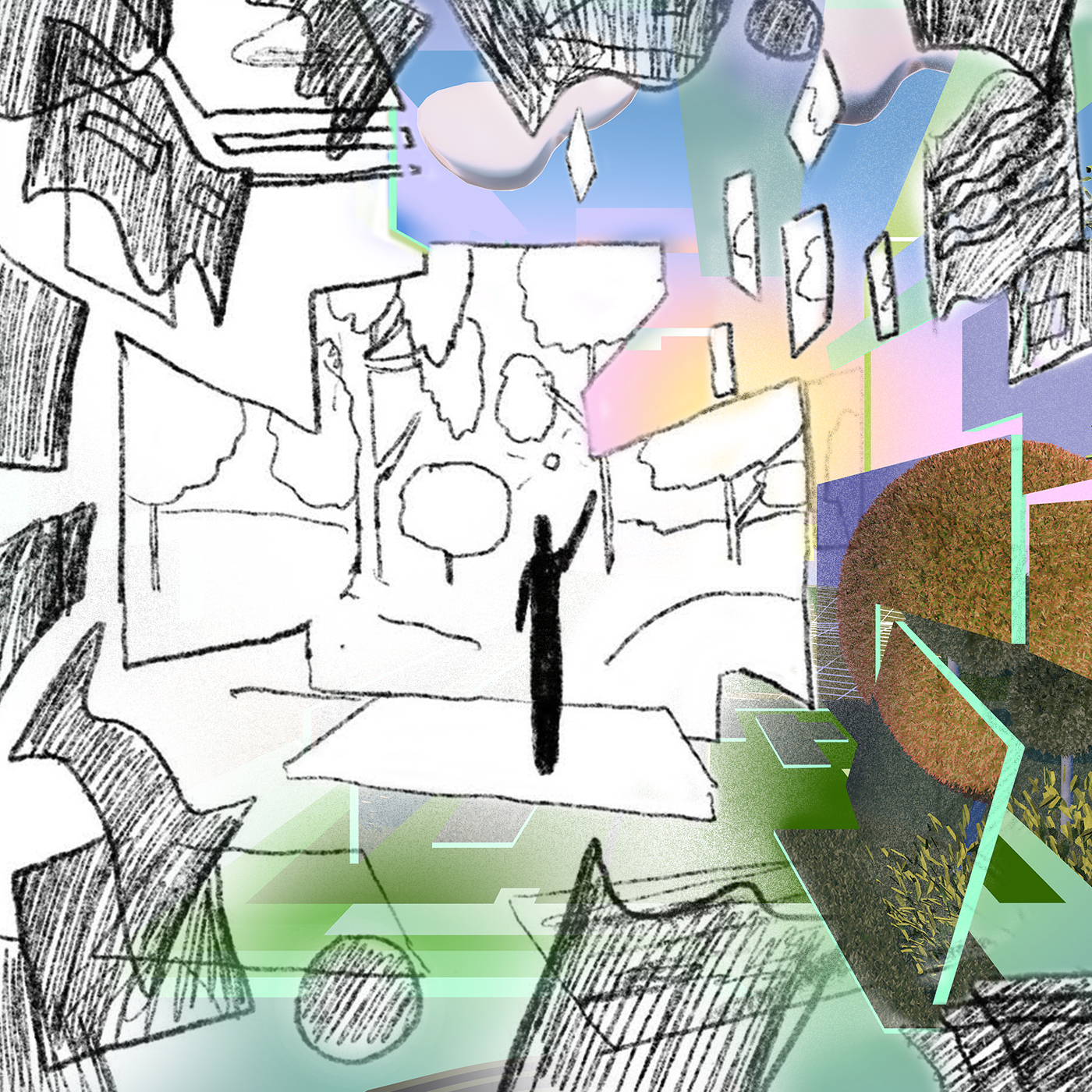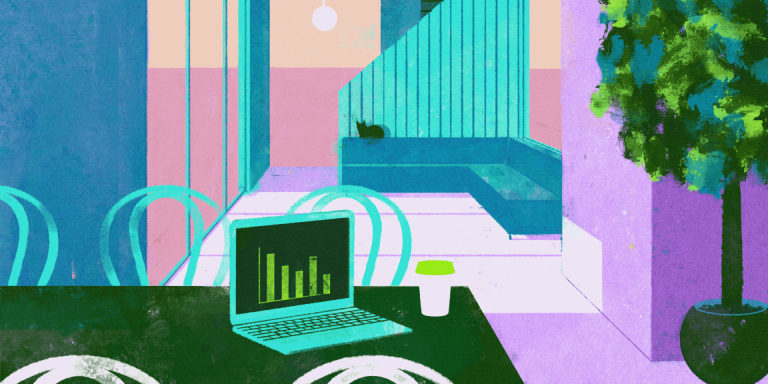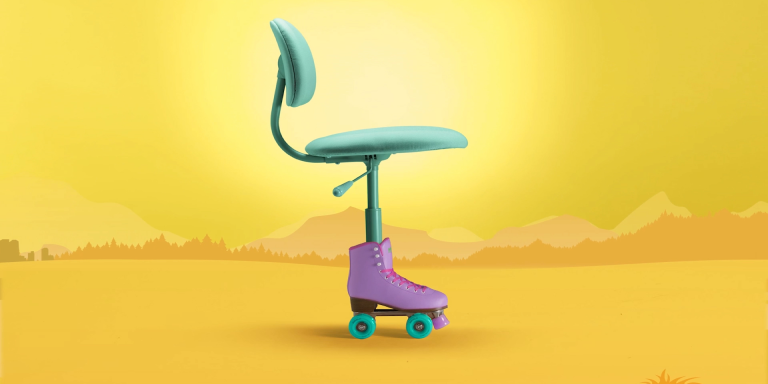The 2023 Microsoft Work Trend Index report, “ Will AI Fix Work? ,” landed just weeks after the launch of Bing Image Creator , a new design tool powered by an advanced version of DALL-E. When it came to creating art for the report, the team saw a unique opportunity to explore how a human artist would incorporate it into their process. Would it help generate ideas? What prompts would be most effective? And how would using AI as a co-collaborator impact the final product?
The artist for the job: Los Angeles-based Jon Han . Han specializes in creating exciting futuristic worlds without the usual dystopian tropes. Because the report data showed that most people are eager for AI to help ease the weight of work, his style felt like exactly the right approach to bring the findings of the WTI report to life.
Jon started by feeding prompts into Bing Image Creator, testing how he could collaborate with it. Using AI inspired a more iterative approach than what’s typical, because playing around with it was quick and easy. “The process for this project was an experimental one,” he says. “Just trying to see what it’s capable of.”
Here, Han takes us inside that process.
Prompt 1:
Person looking on a bridge of panels showing different landscapes

Jon Han: In my usual process, I read a creative brief, think about the concept and visualize it in my head. So in the early stage here, I wanted to see how the tool works with concepting ideas, and contrast that with my usual process. I wanted to see how the image creator would visualize what I’m thinking.
You can see that the tool is using lots of photo-reference images, but generally my work is not as stiff—it’s more abstract. So I started trying to push it to go to the specifics that I was looking for visually.
Prompt 2:
Person in the foreground + in front are geometric panels that are materializing digitally

Jon Han: Here I shifted away from bridges and tried to push for a more abstract image and a digital effect. I liked the shapes of the panels and the digital feel. But it looked too much like a sci-fi movie. I needed a happier mood.
Prompt 3
Person in the foreground + in front are geometric panels that are materializing digitally + panels come together to create a lush landscape
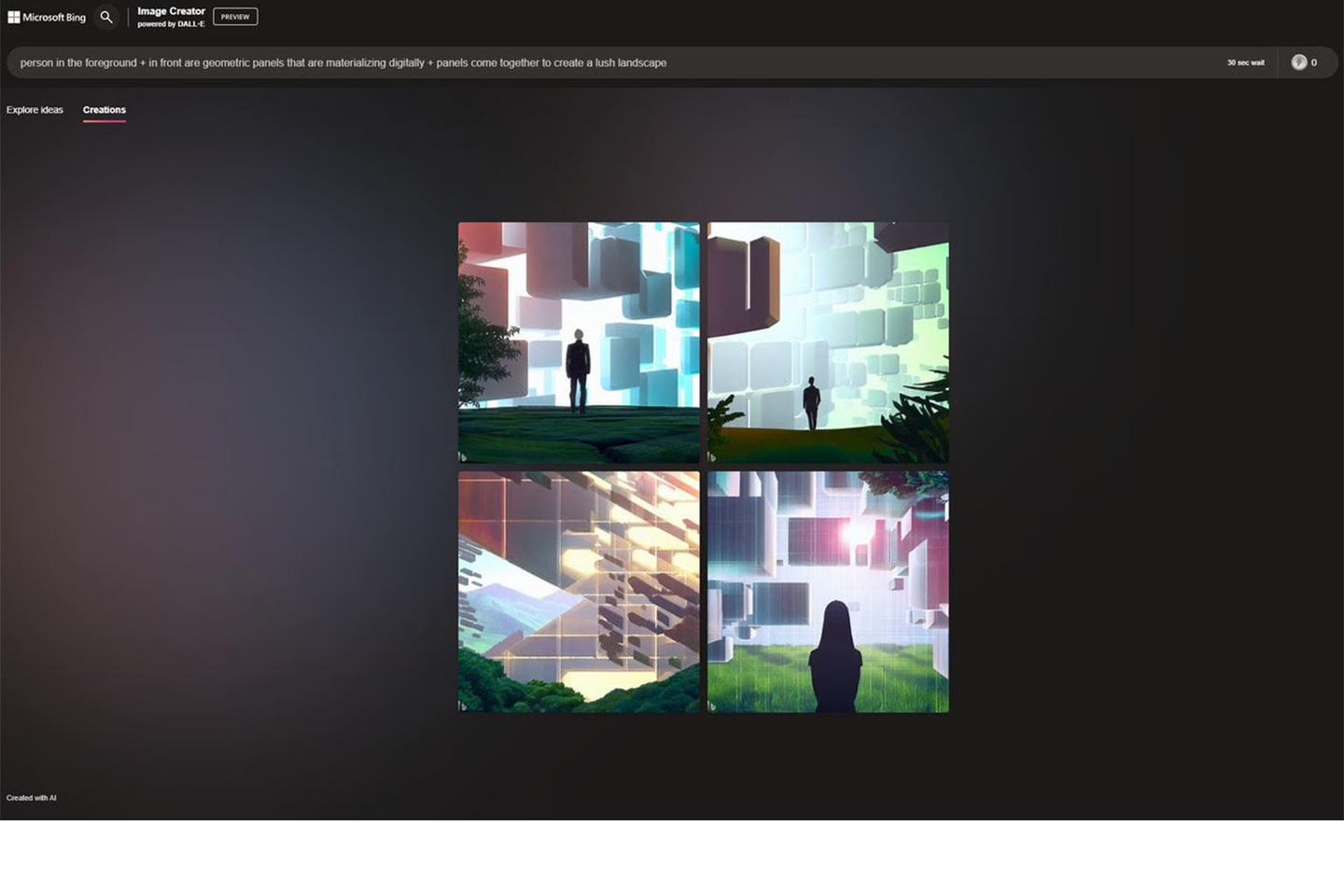
Jon Han: This time, I added in ‘lush landscape,’ which made the image more atmospheric, not so dark and digital. But the temperature of the picture was a little too cool. I put in the word “warm,” and it came out like everything was on fire. Much like any other tool, like Photoshop or oil painting software, there’s tricks to some of this stuff, where certain prompts create certain types of images. So there’s a learning curve to figuring out how to do these minor adjustments to get the specifics you want.
Prompt 4:
Person in the foreground + in front are geometric panels that are materializing digitally + panels come together to create a lush landscape + in the style of jon han
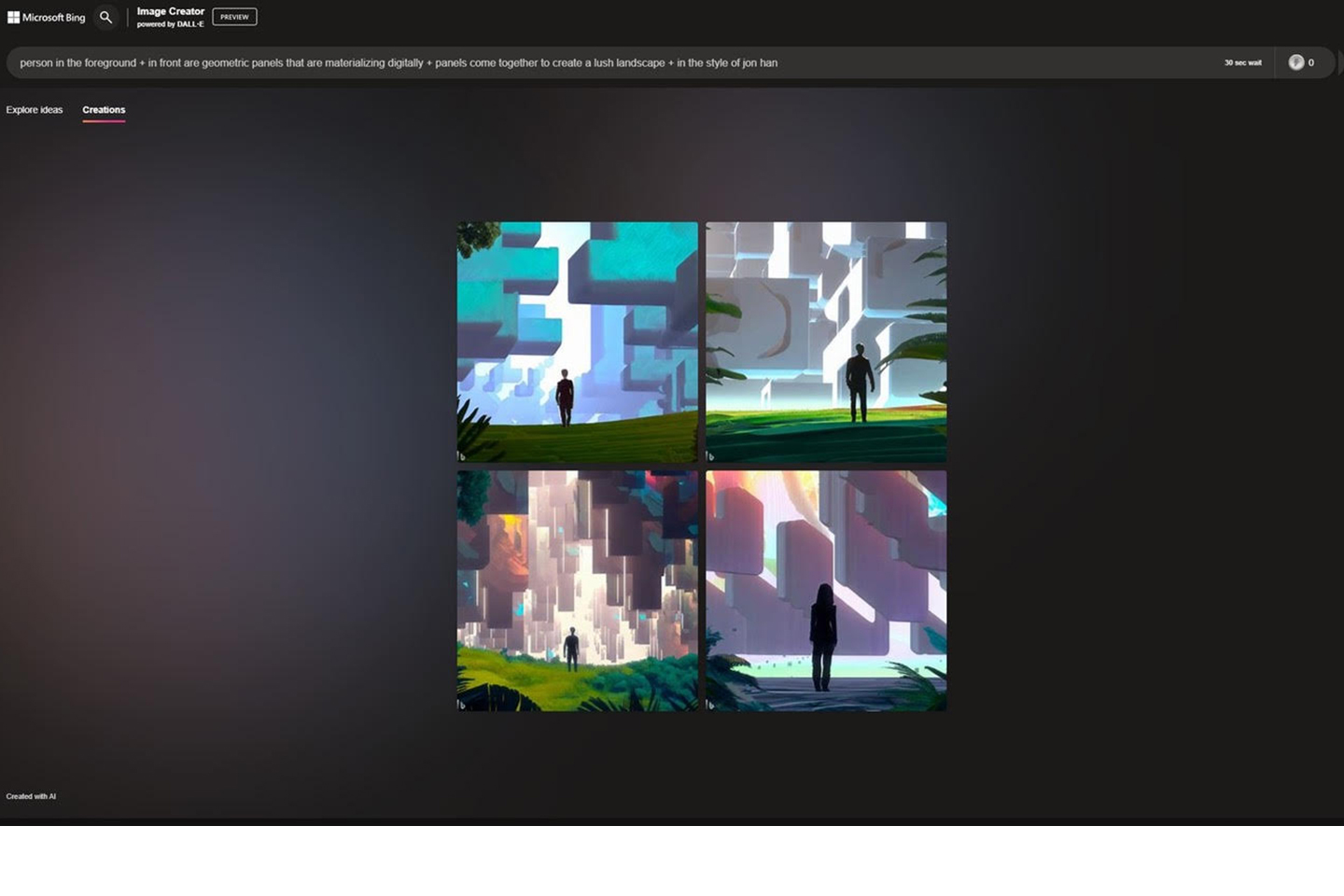
Jon Han: This time I added my name to the prompt to see if it would be able to reference my particular style based on my published illustrations. Adding my name made the person smaller and got the right point of view, seeing the person from the back. I do a lot of compositions where I do a small figure in a landscape. But it didn’t feel hyper-referenced to my work, so that was good.
There are a lot of mixed feelings among artists on AI-generated images, concerns whether these systems could be referencing artists’ work without copyright. I tried to steer away from anything that looks like an artist I know. But one thing about this tool, compared to other AI tools I’ve tried, is that it didn’t seem like it was referencing someone’s work. This was a good endpoint for the concepting stage.
Concept sketch created by Jon Han

Jon Han: After those rounds of experimentation I had a clear image in my head of what I wanted, so I created this concept sketch by hand. The complete picture I wanted to create was too complex to communicate to the image creator. So rather than bring AI-generated images directly into this sketch, I decided to use the tool [or the AI] in later stages to generate options for particular elements of the illustration, like trees or sky.
Normally, you might do an internet search for photos of things like that, for reference. An art teacher once taught me: never use the first few images from an internet search as your reference, because everyone’s going to use those. So with the image creator, it’s nice that these are going to be generated a different way.
Final illustration created by Jon Han
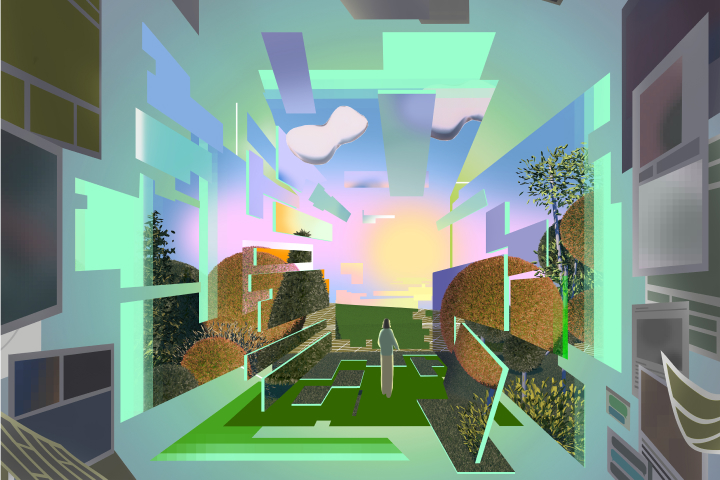
Jon Han: Before creating the full-color illustration, I used the image creator to test different sky colors. I also tried pixelated trees and wireframe trees, looking for something interesting that doesn’t have too much of an AI feel to it. This was all experimentation, finding limitations, and experiments with control.
Han says that for a lot of people, AI image creators are “kind of like a surprise box.” In his experience, they’re most useful when you don’t know exactly what you want. In a case where a creator already has the image they want in their head, an image generator can be good for iterating specific elements.
We are only just beginning to see how next-generation AI can fit into the creative process, and it will certainly look different for every artist and creator. From the prompts people use to guide the tools to the degree that AI does—or does not—influence the final product, everything is up for exploration.
